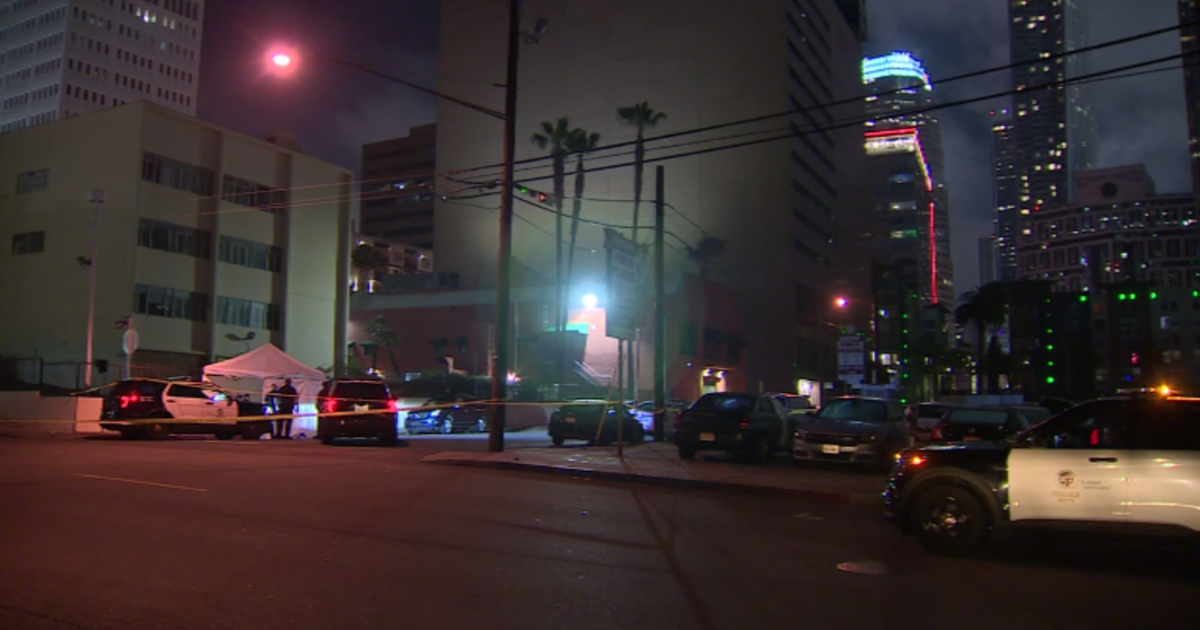More Wear Found On Tubes At Ailing San Onofre Nuclear Plant
LOS ANGELES (AP) — The operator of an idled nuclear plant on the California coast announced Thursday that more unusual wear has been found on tubing that carries radioactive water, the latest disclosure in an ongoing mystery involving the plant's steam generators.
Southern California Edison said in a statement that investigators at the San Onofre Nuclear Generating Station found additional wear in its Unit 2 generators that is similar to degradation in its sister reactor, Unit 3, though at a lower level.
Investigators at the sidelined plant between Los Angeles and San Diego had been puzzled why damage to the generator tubing appeared different in each unit, even though the equipment is essentially identical.
The new findings show "all of the generators are exhibiting the same kind of wear, though the wear in unit 3 is more excessive than in Unit 2," Nuclear Regulatory Commission spokesman Victor Dricks said.
The twin-reactor plant has been shut down for more than two months while federal regulators and company officials try to find out why tubing designed to withstand many years of use under high pressure has been quickly wearing away.
The trouble began to unfold in late January, when the Unit 3 reactor was shut down as a precaution after a tube break. Traces of radiation escaped, but officials said there was no danger to workers or neighbors.
Unit 2 had been taken offline earlier that month for routine maintenance and refueling, but investigators later found unusual wear on tubing in both units.
The excessive tube wear has raised questions about the integrity and safety of replacement generators the company installed in a multimillion-dollar makeover in 2009 and 2010.
There are nearly 10,000 alloy tubes in each of the plant's four steam generators. The latest results show that two types of wear have occurred at both units — tubes are rubbing and vibrating against adjacent tubes, as well as against support structures inside the generators.
Previously, the heavy wear on Unit 2 tubing was limited to areas around bracing and supports.
It's not known, however, why that is happening. Now that similar damage has been witnessed in both units, it could help investigators pinpoint the cause.
The NRC has said the plant will remain dark until the company determines the cause of the wear and fixes it. The company has said 321 heavily damaged tubes will be plugged and taken out of service at the two reactors, well within the margin to allow them to keep operating.
The company has said safety is its first priority.
The new findings come just days after NRC Chairman Gregory Jaczko signaled that Unit 2 might be able to go back into service more quickly than its twin. Meanwhile, nuclear watchdog Friends of the Earth said the disclosure buttressed its case that more study is needed before a restart is considered at either reactor.
The group last month claimed the company misled the NRC about design changes that it fingered as the likely culprit in excessive tube wear in the generators. On Thursday, it released research that said nearly 400 additional tubes were added to each generator as part of those changes, compromising reliability and safety.
"Southern California Edison continues to try to downplay the issue, even as they finally admit the truth - there is no difference between reactors 2 and 3 and they have the same problems" said Shaun Burnie, a nuclear specialist with the group.
Inside a steam generator, hot pressurized water from the reactor flows through bundles of tubes that heat non-radioactive water surrounding them. The resulting steam is used to turn turbines to make electricity.
The tubes are one of the primary barriers between the radioactive and non-radioactive sides of the plant. If a tube breaks, there is the potential that radioactivity to escape into the atmosphere. Serious leaks also can drain cooling water from a reactor.
Gradual wear is common in such tubing, but the rate of wear at San Onofre has alarmed officials since the equipment is relatively new.
The steam generators were manufactured by Japan-based Mitsubishi Heavy Industries, according to company officials.
The Friends of the Earth report, written by Vermont-based nuclear consultants Fairewinds Associates, said generator changes included removing a key support pillar to make way for more holes to accommodate the increase in tubes.
The additional tubes "created unanalyzed flow and stress ... changes that have severely compromised reactor operability," the report said.
The plant is owned by SCE, San Diego Gas & Electric and the city of Riverside. The Unit 1 reactor operated from 1968 to 1992, when it was shut down and dismantled.
» RELATED: San Onofre Shutdown Could Trigger Power Outages During Heat Wave
(© Copyright 2012 The Associated Press. All Rights Reserved. This material may not be published, broadcast, rewritten or redistributed.)



